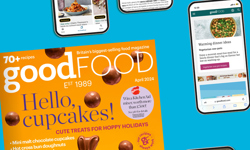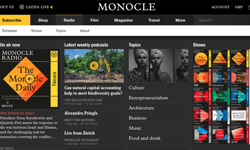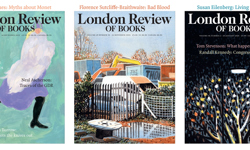* More cautious relations with aggregators: In November, Time Inc CEO Joe Ripp publicly stated that he was disappointed by the revenue coming from Apple News. Other publishers soon complained that the traffic coming from the new app was "underwhelming", and that Apple was dragging its feet on providing publishers with promised user data.
Publishers, who must reach mobile users and deliver sizable mobile audiences to advertisers to stay in the game, won't be abandoning these frenemies anytime soon. But as Digiday's Lucia Moses recently pointed out, they're starting to push for better terms from the aggregation platforms that need their content, with some success. Facebook adjusted its Instant Articles advertising policies to make it easier for publishers to realise more revenue, and Snapchat is making it easier for publishers' Snapchat articles to be discovered outside the closed app. "Look for publishers to fine-tune their distribution approaches as they see where investment is paying off, too," adds Moses. "Publishers will begin to get choosier – and to drive a harder bargain with platforms."
* Leveraging social media "influencers": Magazine media companies are now emulating consumer product marketers' practice of using social "influencers" to drive awareness, engagement and web traffic. At year-end, Hearst unveiled a partnership with web video ad tech company Reelio to create influencer networks with relevance to its magazines' typical advertisers. Seventeen, Cosmopolitan and Cosmopolitan for Latinas will be selling campaigns that include print ads, digital ads on the brands' websites, and videos produced specifically for the brands by popular YouTube talents who jibe with the magazines’ editorial, Hearst told the Wall Street Journal. Condé Nast is jumping in with GQ Stories – which lets advertisers embed native messaging in videos produced by fashionable guys with large social media followings.
* Native advertising: Is the party over? Magazine media companies poised for accelerated native advertising expansion in 2016 and beyond were dealt a serious blow in late December, when the Federal Trade Commission published guidelines for native advertising that require clear identifiers such as ‘ad’, ‘advertisement’ or ‘sponsored advertising content’ and proscribe making ad content look just like editorial content. Advertisers and media platforms that violate these guidelines (not laws) risk damaging publicity and fines. And who knows? The FTC might, some day, even get around to addressing the mounting privacy issues raised by advancing capabilities for using online activities and other personal information to target individuals with advertising.
Responses to these rather tardy guidelines sounded like kids caught with hands in the candy jar. "As soon as you start to standardise things and put guidelines around things, you limit the level of creativity and innovation that is able to occur," Forbes Media chief revenue officer Mark Howard complained to The New York Times. "If you put out stringent guidelines, are you going to put people back in the box?” (My guess: that was precisely the FTC's objective.)
Countless articles have implied that native is a do-or-die for publishers, because no one's buying anything but native anymore, thanks to the difficulty of reaching millennials and the growing use of ad blockers. Yet, it turns out that even online, many publishers – including Forbes and Mashable – are still pulling in more revenue from display ads than native. While Forbes ceaselessly touts the success of its BrandVoice native programme, Howard recently told Ad Age that "display is still sort of the tried-and-true in digital advertising".
* The quest for more meaningful advertising metrics: Together, ad fraud (more than 50% of impressions are still bot-driven, by some estimates) and ad blocking pose fundamental threats to advertising-driven online publishing models. Even putting the FTC's killjoy requirements aside, native advertising isn't really a solution to ad blocking. For one thing, in many cases, ad blocking programs block native ad content as well as display ads. Publishers can try to cajole ad blockers and their users into whitelisting their sites (eg. Dennis Publishing), or actually block the ad blockers (eg. Forbes), but those don't seem like long-term fixes.
The central challenges are delivering ads or ad content that is genuinely engaging and not intrusive or time-wasting (thus making blocking less attractive); and credibly demonstrating engagement and effectiveness to advertisers.
Judy Shapiro, CEO of EngageSimply, offered these sensible insights in Ad Age: "Automated ad-buying deeply degraded user online experiences, digitally chasing or harassing audiences relentlessly through powerful cross-channel, retargeting or predictive big data technologies. The ad-tech engineers… were quick to assume no one wanted advertising, so they devised nefarious ad-tech shenanigans to jam ads within every inch of a user's digital life. [They] missed the subtle but critical point that consumers actually welcome advertising to enrich their online experience – if it is relevant… All of us… need to become… well-versed in utilising new technology to create new types of user interactions… Redemption will be achieved by delivering genuine and quality digital user experiences where trusted engagement is the metric above clicks."
Forward-looking media companies are actually starting to offer more meaningful metrics. Case in point: The Economist's decision to let advertisers pay on a cost-per-hour basis for readers' attention to their ads online and in-app (following a similar move by the Financial Times). Reason: "The Economist’s research has concluded that [even when viewability metrics are standardised], viewability-based trading won’t be enough, certainly for sites which have more in-depth content with higher average dwell time."
Heck, ad blocking might even spur more publishers to try to get readers to pay for more content. Or maybe just enable them to pay their favorite sites not to deliver them ads, as one intriguing startup is proposing.












